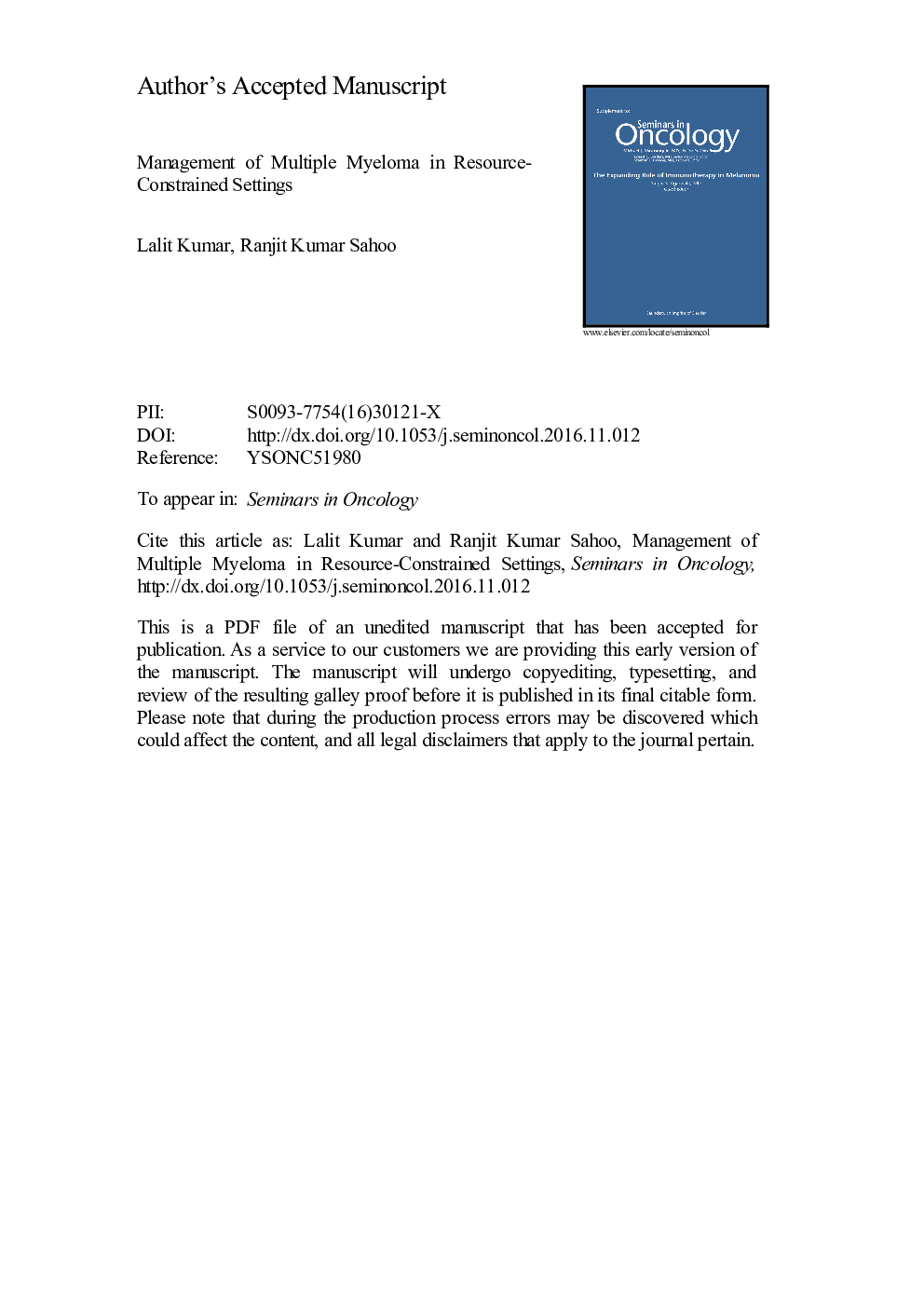| Article ID | Journal | Published Year | Pages | File Type |
|---|---|---|---|---|
| 5530277 | Seminars in Oncology | 2016 | 26 Pages |
Abstract
The prognosis of patients with multiple myeloma (MM) has improved significantly in the past two decades. This is attributed to use of novel agents for induction, high-dose chemotherapy and autologous stem cell transplantation (ASCT), maintenance therapy, and improved supportive care. Currently, evidence-based management guidelines/recommendations developed by International societies/groups are being followed partially in low-resource settings. Lack of quality diagnostics (eg, cytogenetics/fluorescence in situ hybridization (FISH), serum free light chains), novel therapeutics, and trained manpower, and limited financial resources are key challanges. An optimal utilization of available resources with continued educational activities of treating physicians focused on improving knowledge in the management of such patients may be a way forward to improve the outcome of myeloma patients in these countries. Our current approach to the management of this disease is presented here through a discussion of clinical vignettes.
Related Topics
Life Sciences
Biochemistry, Genetics and Molecular Biology
Cancer Research
Authors
Lalit Kumar, Ranjit Kumar Sahoo,
